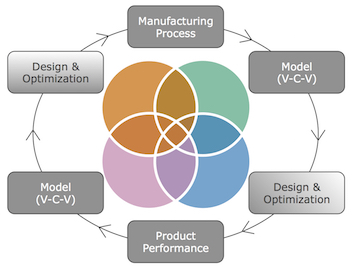
Evolution of the microstructure during the process of consolidation and bonding in soft granular solids
B. Yohannes, M. Gonzalez, A. Abebe, O. Sprockel, F. Nikfar, S. Kang,
and A.M. Cuitino
and A.M. Cuitino
International Journal of Pharmaceutics, Vol. 503, 68-77, 2016
[Journal]
[GoogleScholar]

Abstract
The evolution of microstructure during powder compaction process was investigated using a discrete particle modeling, which accounts for particle size distribution and material properties, such as plasticity, elasticity, and inter-particle bonding. The material properties were calibrated based on powder compaction experiments and validated based on tensile strength test experiments for lactose monohydrate and microcrystalline cellulose, which are commonly used excipient in pharmaceutical industry. The probability distribution function and the orientation of contact forces were used to study the evolution of the microstructure during the application of compaction pressure, unloading, and ejection of the compact from the die. The probability distribution function reveals that the compression contact forces increase as the compaction force increases (or the relative density increases), while the maximum value of the tensile contact forces remains the same. During unloading of the compaction pressure, the distribution approaches a normal distribution with a mean value of zero. As the contact forces evolve, the anisotropy of the powder bed also changes. Particularly, during loading, the compression contact forces are aligned along the direction of the compaction pressure, whereas the tensile contact forces are oriented perpendicular to direction of the compaction pressure. After ejection, the contact forces become isotropic.






